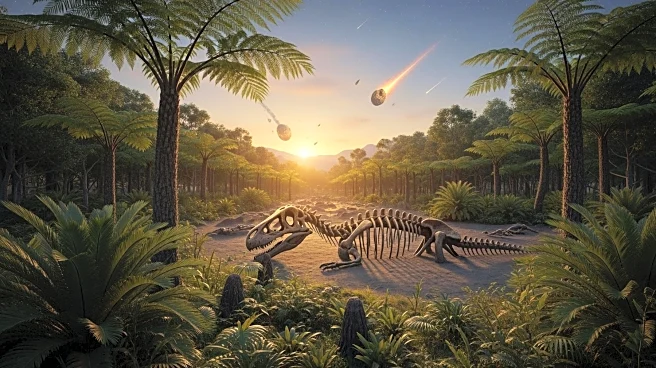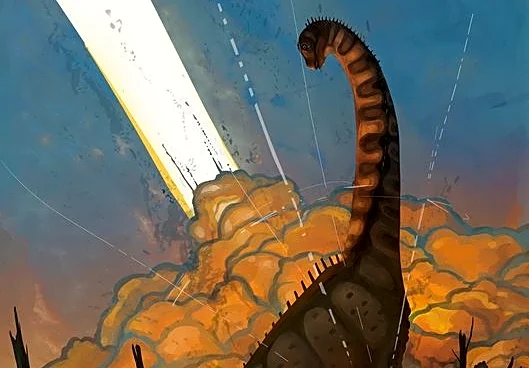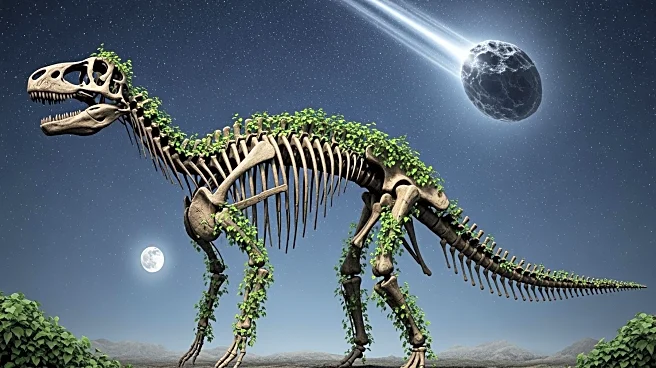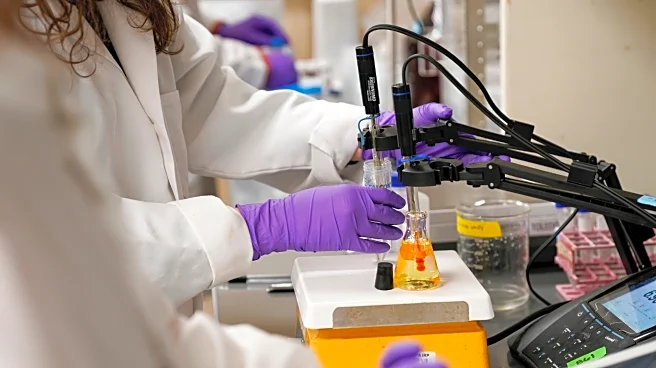What's Happening?
A new study conducted by researchers from Baylor University, New Mexico State University, and The Smithsonian Institution has challenged the long-standing belief that dinosaurs were in decline before the asteroid
impact that led to their extinction 66 million years ago. The study, published in Science, reveals that dinosaurs were thriving in vibrant ecosystems right up until the asteroid struck. Fossils from the Naashoibito Member of the Kirtland Formation in northwestern New Mexico show that dinosaurs were flourishing in distinct regional communities, contradicting previous assumptions of a gradual decline. The research highlights that dinosaurs were divided into separate 'bioprovinces' shaped by regional temperature differences, rather than geographical barriers like mountains or rivers.
Why It's Important?
This discovery is significant as it reshapes our understanding of the extinction event that ended the age of dinosaurs. It suggests that the extinction was not due to a gradual decline but was an abrupt, catastrophic event caused by the asteroid impact. The study underscores the resilience and fragility of life on Earth, providing insights into how ecosystems respond to global upheaval. The findings also highlight the importance of protected landscapes in unlocking vital insights into Earth's history, as the research was conducted on public lands managed by the U.S. Bureau of Land Management.
What's Next?
The study opens new avenues for research into the factors that contributed to the survival and diversification of mammals following the extinction of dinosaurs. Researchers may further explore how temperature-related patterns influenced the recovery of life after the asteroid impact, potentially leading to a deeper understanding of evolutionary processes.
Beyond the Headlines
The research emphasizes the role of temperature in shaping ecosystems, which could have implications for understanding current climate change impacts. It also highlights the importance of interdisciplinary collaboration in advancing scientific knowledge, as the study involved multiple institutions and international partners.














